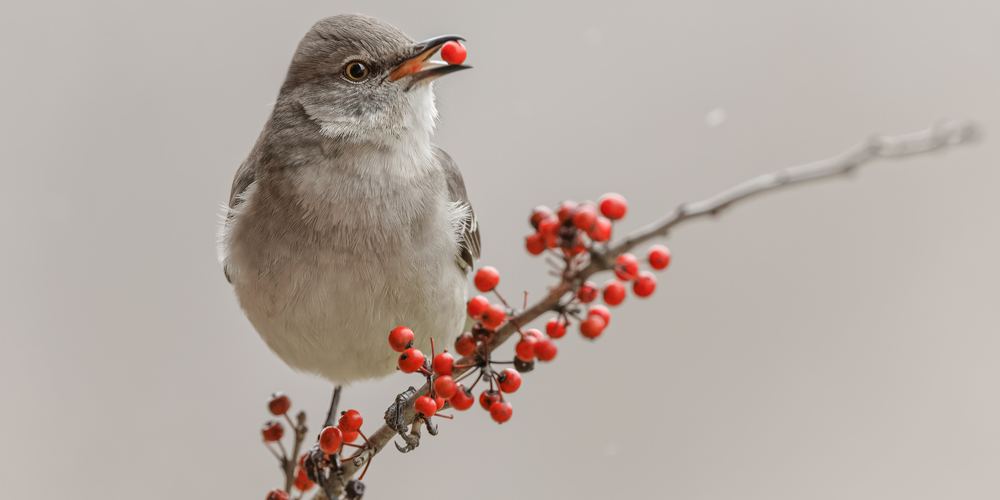Mockingbirds are an interesting species that are medium-sized and have long tails. They are found all over the United States and have various characteristics that make them stand out from other birds. There are seventeen species of mockingbirds which are all part of the Mimidae family. The Northern Mockingbird is the most common species. So what do mockingbirds eat?
In this guide to the diet of these beloved birds, we will discuss everything you need to know about the birds eating habits, including their favorite foods and preferred feeding methods.
What do mockingbirds eat in the wild?

Mockingbirds are omnivores, meaning they eat both plants and animals. They are primarily insectivores, which means that most of their diet is made up of insects and other bugs. However, they will also eat fruits, seeds, grains, nuts, amphibians such as frogs and tadpoles, and small reptiles like lizards.
They typically forage for food by searching through vegetation on the ground or in the trees. They also eat worms, slugs, ants, and even bees.
During the fall and winter months, mockingbirds will eat berries from trees and shrubs. They often eat holly, mulberry, blackberries, and rosehips.
What do baby mockingbirds eat?
When they are nesting, adult mockingbirds will bring food to their chicks. When feeding their young, they return to their nest multiple times each day.While in the nest, their parents will feed baby mockingbirds, mostly insects. As they grow older, their diet will become more varied, and they will start to eat seeds and fruits as well.
What can you put out to attract mockingbirds to your yard?
Mockingbirds are lovely little songbirds that were once commonly kept as pets. During the 18th and 19th centuries, these birds almost became extinct as people caught them and sold them as pets. Today it’s illegal to keep a mockingbird as a pet or to catch, breed, or sell the birds. You can, however, feed mockingbirds in your yard.
Since these birds eat a wide variety of foods, it is not difficult to attract them to your yard. If you want to encourage mockingbirds to visit your property, you can try placing out seed mixes that contain sunflower seeds and millet. In addition, fresh fruits and vegetables will often draw in these birds as well.
If you want to take your bird feeding attempts a step further, you can also put out nesting materials such as hair and leave twigs and leaves on the ground rather than clearing up debris. Mockingbirds will appreciate having access to these supplies so they can create their nests in safe locations that are not easily accessible by predators. You can also plant trees and shrubs in dense clumps so that the birds have somewhere to nest.
You may have noticed that mockingbirds are solitary creatures that are territorial. They are only seen together in pairs during mating and breeding season. Other than that, mockingbirds live alone and will fight with other birds that enter their territory.
What foods should I avoid giving my mockingbird?
There are a few foods that you should avoid feeding your mockingbird, as they are toxic or may lead to other health problems. These include chocolate, avocado, and anything containing alcohol.
In general, it’s best to avoid giving mockingbirds, other birds, and wildlife processed foods as these are unhealthy and contain ingredients that are not part of the bird’s natural diet. Feeding birds large quantities of bread can make them ill and should be avoided. If you plan to feed mockingbirds and other wildlife, it’s best to buy seeds and fruit. If you’re lucky, you’ll be rewarded with a beautiful song after feeding a mockingbird.
Final thoughts
Mockingbirds are fascinating birds whose diet is highly varied and adaptable. While their primary source of food is insects, they will also eat other small animals and fruits, seeds, grains, and nuts.
To attract these birds to your yard and get them interested in visiting your property, try putting out birdseed mixes, fruits, and seeds.
